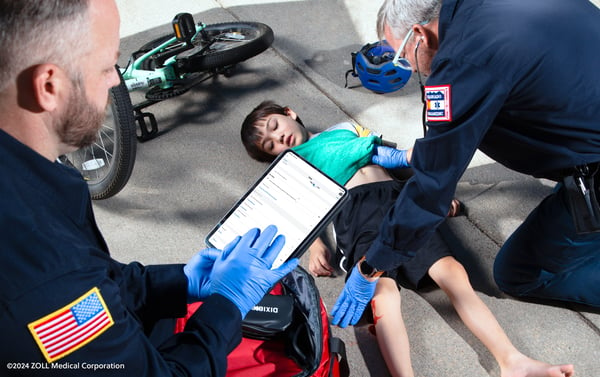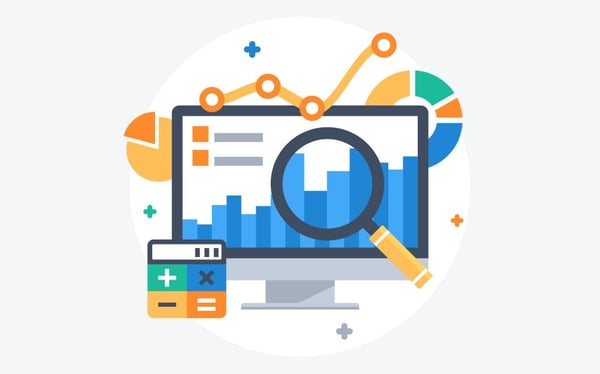The End of Delayed Documentation
The Challenge of Counting Costs
In EMS, our reimbursement doesn’t cover our costs
Was this information valuable?


In EMS, our reimbursement doesn’t cover our costs.
Few leaders will dispute that, and various investigations over the years have backed it up.
Now the biggest payer for prehospital services, Medicare, has begun a process of collecting cost data that can formally document the shortfall. The Bipartisan Budget Act of 2018, which became law earlier this year, enables CMS to start collecting “cost, revenue, utilization, and other information” from providers and suppliers of ambulance services.
That creates an exciting moment of opportunity for EMS.
“If we can do this correctly, it will have a very positive impact on our industry,” said Asbel Montes, Vice President of Government Relations and Reimbursement for the Louisiana-based Acadian Companies. “Collecting our data appropriately can help us reform our current fee-for-service system to be adequately reimbursed not only for the cost of providing services, but also look at new avenues of reimbursement.”
In the long term, this data can fuel EMS’s looming transition to value and quality based reimbursement. In the short term it can help with the ongoing challenge of balancing existing fee-for-service programs and our vexing assortment of payer types.
“This is one of the biggest moments our industry has faced in the last 20 years,” Montes said,
“and it could either be an enormous benefit to our industry or have dire consequences if we don’t do it correctly.”
The Need for Standardization
It’s not hard to calculate the basic costs of doing business. Systems have labor, including hiring and training; they have vehicles and fleet expenses, including acquisition, maintenance, and repairs. There are medical equipment and supplies, physician oversight, communications hardware and software, insurance, and more.
However, not everyone counts exactly the same things in the same way. While agencies may track comparable data elements, their precise definitions and formats may differ, undermining the value of many comparisons.
Montes explained, “We’re so much different than any other healthcare industry. We have volunteers, governmental authorities, independent services, public, private, nonprofit, fire-based, hospital-based. Each of them can have different cost structures and share operational costs against multiple lines. As CMS begins to build a cost-data tool, it has to account for these different organizational types.”
Yes, it’s true – CMS is developing a tool to help users standardize their cost data.
Montes, who is a part of the team delivering a precon session on the topic at the American Ambulance Association’s September conference, said the most notable thing that needs to be done is begin standardizing what everyone considers their costs to look like.
“We need to know our costs but also agree on what the definitions are,” Montes said.
CMS will also want to know about revenue, and systems account for that differently too. Some, for instance, might combine all Medicare payments into a single lump sum, whether via part B or Medicare Advantage. Medicaid comes with similar challenges. Some systems even lump it all in with commercial insurance.
How to Collect It
The issue of cost data has been on the AAA’s radar for years. In 2012 the organization contracted with a Washington, D.C.-based healthcare analytics outfit, the Moran Company, to determine the best way to collect it. Moran produced a two-phase plan:
- Ambulance suppliers provide basic descriptive classification characteristics (e.g., type of organization, etc.)
- Survey statistically significant numbers of each supplier and provider groups for cost and other data.
CMS will take a similar approach but use a representative sample rather than a random one and initially collect data yearly, more frequently than Moran recommended. There will be strong pressure for agencies to participate, including a 10 percent cut in the following year’s reimbursement if they don’t.
The stakes are high for getting the data right. Get it wrong, and EMS could face the same fate as home health.
Montes warned, “When Home Health Services rate structure was rebased, they received, over the last 10 years, more than 10% in cuts to their industry because of bad data. They’re now trying to fix that. So we have to learn other healthcare industries and make sure we’re unified as an industry and in collecting our data. It’s going to require a lot of work, but we have to become uniform,” said Montes.
Proving your value
According to a recent Morgan Stanley report, nearly 20 percent of hospitals are “performing weakly or at risk of closure.” This means EMS systems are poised for an big opportunity for growth — if they can prove their value.
Unfortunately, major payers, policymakers and the public largely aren’t aware of the role of prehospital providers in keeping healthcare costs in check. The issue going forward is whether the EMS industry can communicate to state and federal regulators the benefit to their services on the local scale.
Montes admitted that historically, EMS hasn’t been great at communicating their value to the public, but he believes that a central message would help move their image out of the realm of transportation and into patient care and public safety.
“While healthcare is local, Medicare payment policy is national. We need to get smarter as an industry, and use data on our side,” Montes said.
For more information on how to operationalize your data into actionable results, view the archived presentation “Operationalizing Data: Advice from the C-Suite."
Related Posts
4 Must-have Data Points for Dispatch-Billing Alignment and Maximum Reimbursement
Podcast: 4 Ways ePCR Software Can Relieve EMS’ Biggest Headaches
ZOLL Pulse Blog
Subscribe to our blog and receive quality content that makes your job as an EMS & fire, hospital, or AR professional easier.
ZOLL Pulse Blog
Subscribe to our blog and receive quality content that makes your job as an EMS, fire, hospital, or AR professional easier.






